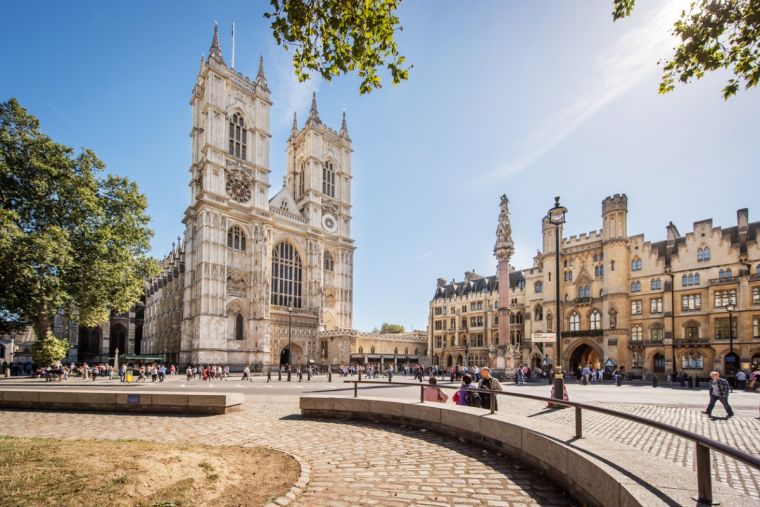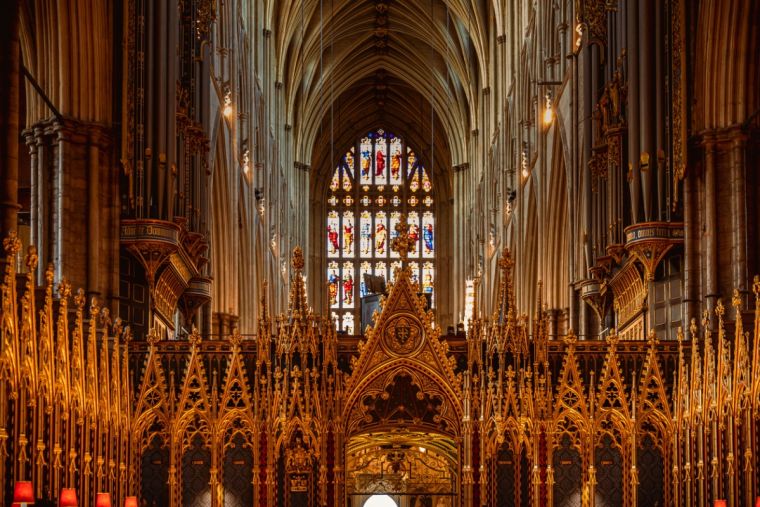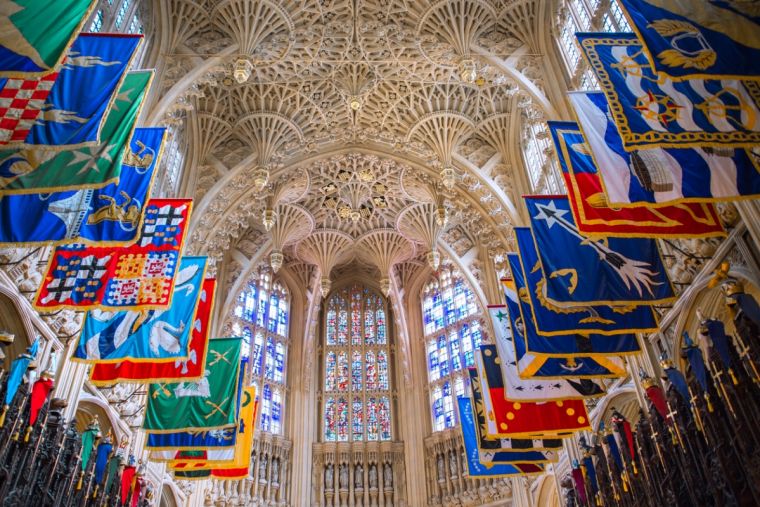Why Westminster Abbey? 1,000 years of coronation history

The coronation of King Charles III is the latest in a continuous history of such events, which stretches back a millennium. Its location, within Westminster Abbey, is a direct link to Anglo-Saxon England and the eleventh-century world.
The British Isles in the eleventh century
The roots of the events which occur at a coronation in the modern UK reach back to before the Norman Conquest of 1066. In that pre-Conquest world there was no political authority which united the communities of the British Isles. Things were more complex, as a very quick overview will demonstrate.
Anglo-Saxon England was ruled by the royal family of Wessex, which had originally dominated the lands south of the Thames, but had united England (largely within borders we would now recognise) during the tenth century, following the Viking Wars.
Since 954 (when the Viking king of York, Erik Bloodaxe, had died in battle) this royal family had supplied the rulers of England, with a break in the period 1016–1042 when England had been part of an Anglo-Danish empire under Cnut and his two sons. But in 1042 the English royal house had been restored, when Edward the Confessor (king 1042–1066) had returned from exile and inherited the English throne.
In Scotland a unified Kingdom of Scots had emerged by the early eleventh century, in southern Scotland, but had yet to fully assert itself over the (still independent) rulers of the Highlands and Western Isles. It contested rule over Cumbria with England.
Wales was a mosaic of kingdoms which, while nominally independent of England, were frequently forced to submit to English rulers and pay tribute to their powerful (and aggressive) eastern neighbour.
Ireland, like Wales, was made up of many small kingdoms, which at times were drawn under the authority of a dominant High King from one of the Irish kingdoms.
All the communities were officially Christian by the eleventh century. The latest to convert being the Norse communities (descendants of Vikings) in eastern Ireland and the Western and Northern Isles of what is now Scotland. The other communities – English, Welsh, Scots, and Irish – had been Christian for centuries.
The importance of Westminster Abbey
Westminster Abbey is the place in which kings and queens of England have been crowned since the middle of the eleventh century. As the British Isles became unified, through a combination of conquest and dynastic arrangements, it became the coronation place of kings and queens of the United Kingdom.

Most kings of Wessex, since 901, had been crowned at Kingston upon Thames. But, in 973, Edgar was crowned at Bath. This was probably due to its impressive Roman ruins (having been the Roman settlement of Aquae Sulis, with its impressive bath complex), as he attempted to set an imperial tone for his rule. Edward the Confessor was crowned in Winchester, which had been a special place for the rulers of Wessex for centuries.
However, it was Edward the Confessor who set the scene for the next thousand years. And that is inextricably connected with Westminster Abbey. Today, the spiritual centre of the monarchy is there, in a church whose origins date from the 960s or early 970s, when Saint Dunstan and King Edgar installed a community of Benedictine monks.
Between 1042 and 1052, Edward the Confessor began rebuilding St Peter's Abbey, to create a royal burial church. The attraction of the location was its proximity to the royal palace at Westminster, which in turn was close to the preeminent commercial centre of London. The building of the new abbey was completed around 1060 and it was consecrated only a week before Edward's death on 5 January 1066.
Edward was buried at the new church on 6 January. That very afternoon, Harold Godwinson (a powerful non-royal and famous for his death at the Battle of Hastings) was crowned as Harold II. This almost certainly occurred at Westminster Abbey, although we have no documentary proof of this. If so, he was the first to have his coronation there.
Since then, it has been closely connected with the English, and then the British, monarchy as a place of coronation and of funeral (even if, since the nineteenth century, the burial place has been at Windsor). As a result, Westminster Abbey has witnessed thirty-eight coronation ceremonies.
It became so connected to coronations that, when Henry III was forced to choose Gloucester as his coronation place in 1216 because rebel barons held London, he had a second coronation at Westminster Abbey in 1220 (needing papal dispensation for another one).
Coronations at the abbey over the centuries
While Harold II was almost certainly crowned at Westminster Abbey, it is definite that William I (aka William the Conqueror) was crowned there on Christmas Day, 1066. This followed his defeat of Harold II at the Battle of Hastings in October that year. The location was clearly chosen to underscore his claim to be the legitimate successor of Edward the Confessor.
The coronation was marred with violence. Norman bodyguards outside the abbey mistook the acclamation (when those in the service acclaimed the new king) for a riot, turned on the crowd, and burned down surrounding houses.
This was not the last time that violence marked a coronation there. At the coronation of Richard I (Lionheart), in 1189, an antisemitic crowd launched a violent attack on the Jewish community in London.

Jewish citizens had come to the abbey to pay homage to the new king. The crowd – inflamed by antisemitism at this time of crusade – took offence at Jews attending a Christian ceremony. Most would not be going on crusade with the king and so targeted their crusader-enthusiasm on those at home they considered to be the "alien other." It was a grim foretaste of more antisemitic violence to come during the next century.
Other coronation events reflected contested times. In 1274, after Edward I was crowned, he removed the crown and said he would not wear it again until he regained lands lost by his father (Henry III) and grandfather (John). He never regained those lost lands in France but conducted wars against the Welsh and Scots.
In 1296, the Stone of Scone (on which kings of Scots were crowned) was seized by Edward I and incorporated into the Coronation Chair of Westminster Abbey, which was built for him between 1297 and 1300. The first coronation incorporating it was that of Edward II in 1308. The stone was returned to Scotland in 1996.
Coronations in the abbey have marked other pivotal points in history. In 1308, Edward II's coronation oath included a new clause "to uphold the laws and rightful customs which the community of the realm shall have chosen," an attempt to limit the monarch's power.
In 1429, at just seven years old, Henry VI's coronation order was modified to incorporate French practices. This was to show that this coronation could only be completed in France (he was crowned in Paris in 1431). The union of England and France swiftly collapsed.
In 1559, the coronation of Elizabeth I was a complicated and rather confusing mixture of English and Latin, reflecting religious changes.
In 1603, the coronation of James VI of Scotland as James I of England, united the two nations under one ruler; a foundational event in the history of the United Kingdom.
In 1661, almost the whole of the coronation regalia for Charles II had to be recreated as the traditional items had been melted down and sold when the nation was a republic between 1649 and 1660.
In 1689, the joint monarchs William III and Mary II swore a coronation oath which represented a new stage in the establishment of a constitutional monarchy, promising to "maintain the Statutes, Laws and Customs" of England (as made by parliament). That settlement has underpinned the constitutional role of the monarch since then.
Westminster Abbey has reflected the changing history of both the monarchy and the nation over one thousand years. Its stones have echoed to the great events of history.
Martyn Whittock is a historian, columnist, and lay minister in the Church of England. Having written books on a wide range of historical and theological themes, he has a particular interest in the impact of the past on the present, and the interaction of faith and culture/politics. His recent books include: Jesus the Unauthorized Biography, The Story of the Cross, and The End Times, Again? He has appeared on news and talk shows, on television and radio, discussing historical themes, faith and the crown in the UK, US politics, and the war in Ukraine (including its religious dimension).











